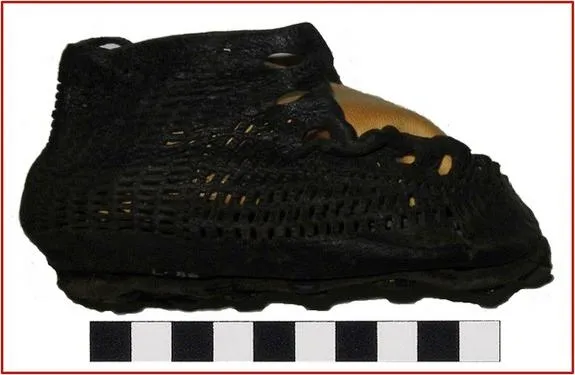In Ancient Rome, Children’s Shoes Were a Status Symbol
From a trove of ancient Roman footwear, a rethinking of military life
/https://tf-cmsv2-smithsonianmag-media.s3.amazonaws.com/filer/2013012112204501_21_2013_roman-soldiers.jpg)
As the Roman Empire expanded out across Europe and northern Africa, military bases filled with Roman soldiers working to maintain the empire’s borders. Within the walls of these bases, men—and for the most part, only men—lived within a strictly stratified social structure. The standard view holds that, since military men were not allowed to get married, Roman forts were a bastion of testosterone with no women nor children in sight.
A few years ago, evidence of women’s and children’s shoes collected from sites near ancient Roman bases upended this traditional view. Using a scientific mapping approach to analyze the ancient shoes, archaeologist Penelope Allison argued that “these military bases were not exclusively male domains, that women were involved in a number of roles inside their walls, and that traditional perspectives on the socio-spatial arrangements of military life in the early Roman Empire are fallacious.”
Now, on-going research by University of Western Ontario archaeologist Elizabeth Greene at an old Roman fort in England suggests that women and children weren’t only present in military bases, but that they could have played an important role in the fort’s social structure. Based on more excavated shoes, Greene found that the footwear was not one-size-fits-all. Rather, she suggests that children’s shoes reflected their social status—the inherited status of their parents. Stephanie Pappas for Live Science:
Greene and her colleagues traced what types of children’s shoes were found where. They discovered that the decorations on the shoes corresponded to the places they were uncovered. In the barracks, for example, children’s shoes mimicked the common boot of adult soldiers.
In the quarters of the base’s commander, the team found “an elaborate infant shoe in the exact style of a high-status man’s boot.”

The shoe is for a child too young to walk, but it boasts a full set of iron studs on the sole, just as a man’s boot would. The expensive material suggests the shoe was high quality, Greene said. The upper part of the shoe is leather, cut into an elaborate fishnet pattern. Not only does the pattern show off workmanship, it would have revealed colored socks underneath, which the ancient Romans also used to denote status.
Greene, in a release, said:
Shoes are very important in the Roman world. One of the things about the Roman world is that sartorial symbols mean everything. They indicate to everyone who you are and what you are. So, what I find very interesting is that even a tiny infant shoe replicates an adult male’s shoe to a T.
More from Smithsonian.com:
Greek Subway Dig Uncovers Marble Road from Roman Empire
Climate and the Fall of the Roman Empire
Men Chasing Cat Stumble Upon 2,000-Year-Old Roman Treasures
/https://tf-cmsv2-smithsonianmag-media.s3.amazonaws.com/accounts/headshot/smartnews-colin-schultz-240.jpg)
/https://tf-cmsv2-smithsonianmag-media.s3.amazonaws.com/accounts/headshot/smartnews-colin-schultz-240.jpg)